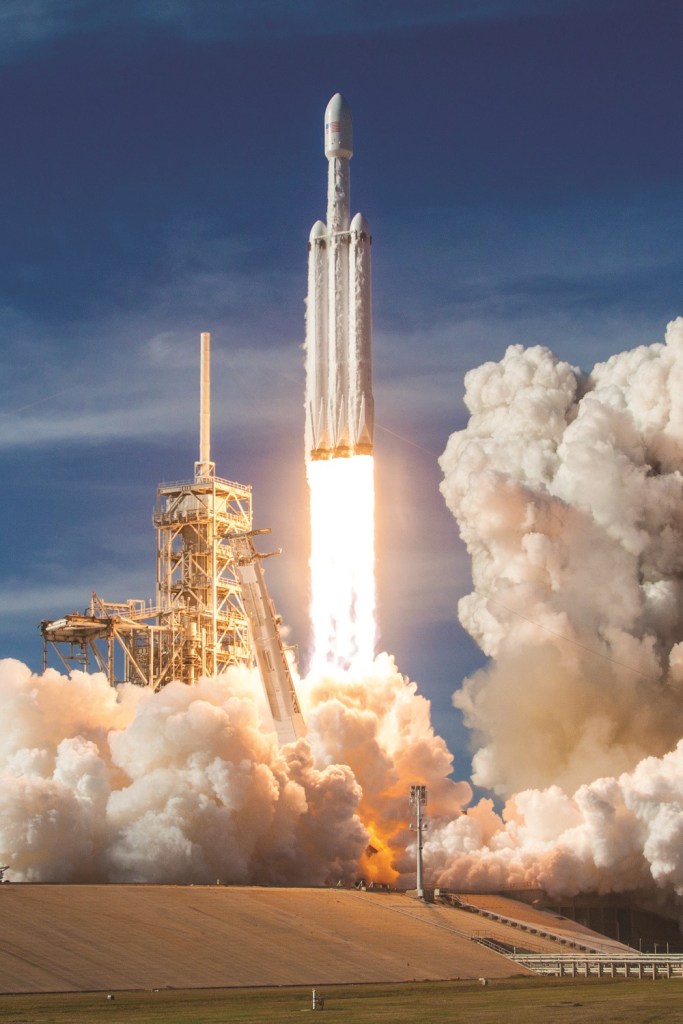What future for the Space Launch System? – SpaceNews

To great jubilation, NASA’s Space Launch System performed a spectacularly successful first test flight beginning Nov. 16, 2022. Almost a month later, after multiple distant orbits of Earth’s moon, the Orion capsule returned Dec. 11 to a safe splashdown and recovery.
Does a successful first flight finally mean that SLS will return astronauts to Earth’s moon more than 50 years after astronauts last visited? Does it earn SLS a future among the United States’ fleet of launch vehicles?
Spoiler: the answer to both questions is probably “yes” — which has profound consequences for the future of United States spaceflight.
SLS is a Saturn 5-class rocket, designed to return humanity to Earth’s moon with a launch architecture that includes minimal assembly or refueling in orbit. It studiously avoids all the experience and lessons learned building, refueling, and maintaining the International Space Station in orbit. Called Artemis and loosely modeled on the 1960s Apollo project that beat the then-Soviet Union to the lunar surface, the architecture uses space shuttle hardware and personnel to the degree possible. A second test with astronauts, Artemis 2, is now planned for no sooner than 2024. Based on the program’s history to date, no one should expect that date to be achieved.
The successful Artemis 1 test followed persistent reliability problems that delayed the first flight for months. Operational delays, largely driven by severe limitations in the heritage hardware SLS is assembled from, further delayed the flight by reducing launch windows and time on the pad. All that was after an extraordinarily troubled development history — despite the project being designed around existing technology and components.

That history should not obscure two key facts: When SLS finally flew it performed very well. For now, and in the immediate future, no other nation could pull off a cis-lunar mission with human-related hardware like Artemis 1.
With Artemis 1 safely put to bed, NASA can seriously plan for the first U.S. astronauts to visit Earth’s moon since Apollo 17 in 1972 — but not any time soon. The Artemis 3 mission to the lunar surface depends on a variant of SpaceX’s Starship launch vehicle adapted for landing. As of this writing, Starship has yet to fly even to orbit. A first orbital attempt may be imminent, but even so, 2025 is currently the earliest opportunity for Artemis 3, and 2027 or beyond is more likely. NASA was forced to choose Starship as Artemis’ first landing vehicle when Congress refused enough money to develop more than one design and, unlike the other bidders, SpaceX said it would cover a significant part of the cost (Blue Origin did offer money, but only after losing to SpaceX). Since then, NASA has requested bids for additional landers.
Understandably, Artemis 1 has led to a great deal of excitement within the space community. Nonetheless, it is worth asking: should this project continue even if it eventually performs part of a successful landing?
The $4 billion-plus annual cost to maintain SLS, the Orion capsule, and their infrastructure is unlikely to decline much when the rocket becomes operational. That infrastructure is capable of two to three launches per year, though expect far fewer at first. Early versions are not greatly more powerful than existing rockets, in spite of estimated costs per flight on the order of $700 million to $4 billion or more, depending on how much infrastructure and development cost is included.
The Block 1 SLS can lift 95,000 kilograms to low Earth orbit (LEO), while the future Block 2 is planned to lift 130,000 kilograms into the same orbit. Comparable figures for the Delta 4 Heavy and Falcon Heavy are just under 26,000 kilograms and over 63,000 kilograms, respectively. Falcon Heavy costs well under $200 million per launch, a price that includes the amortized costs of development and infrastructure. While the exact figure cannot effectively be calculated, the likely cost per kilogram of payload delivered to orbit by SLS is literally astronomical compared to what is available on the commercial market.
Advocates talk of finding other markets for the SLS. However, SLS currently has no market outside of NASA, and at those prices, it is unlikely to. NASA’s deputy administrator under President Obama, Lori Garver, fought SLS development as an unaffordable distraction from Commercial Cargo and Crew, where she felt the future lies. She reports in her book Escaping Gravity that she asked the defense department and the intelligence agencies whether they needed or wanted SLS. She was unequivocally told no.
Even within NASA, payloads that were not explicitly designed to require the SLS, or not politically required to use the rocket, are avoiding the program. This includes the Gateway orbital space station in lunar orbit and even the moon lander, relegating SLS to launching crew into lunar orbit. That is a job any number of far cheaper rockets could handle if Orion were launched separately from the upper stage and fuel, and then docked in orbit. A similar procedure was demonstrated as early as Apollo when the Command and Service Modules unlocked from the Saturn 5’s S-IVB stage, rotated 180 degrees, docked with the Lunar Excursion Module, and pulled it away from the spent upper stage. All this was done deep in trans-lunar space no less, after leaving Earth orbit.

Even if the first few SLS flights proceed without a hitch, supporters are likely to be disappointed unless the program can reduce prices enough to attract non-NASA customers. Congress is unlikely to go along with greatly reducing the workforce. The program is increasing its long-term costs by building additional ground infrastructure that will need to be maintained. As NASA sees it, the agency is focused on laying out SLS’s transition from design and development into a continuously operated system intended to endure until 2050 and beyond.
What could the United States do with the $3 billion to $4 billion SLS and Orion will continue to consume for two to three flights per year at best? Put in financial terms, what are the lost opportunity costs of continuing to fund SLS?
As a start, NASA could fly two-thirds of an SLS payload on a Falcon Heavy for well under $200 million, and do it with a regular and frequent tempo. Even if an SLS flight costs just $700 million, NASA could launch three Falcon Heavies and lift more than twice as much as a single SLS. I’ve grossly underestimated the probable real cost of an SLS launch, and overestimated the cost of a Falcon Heavy, to be as generous as possible to SLS.
A MIDDLE PATH
There are other medium-class rockets under development and operation, at no cost to NASA, that could handle lunar missions. In a “distributed” architecture, modular payloads would be launched to orbit and later assembled into finished spacecraft of any size and mass, where they could be fueled and supplied using techniques demonstrated building and maintaining the International Space Station. Part of the ISS was launched and assembled using Russian Proton medium-class rockets. It is fueled using freighters launched on relatively low-cost Soyuz rockets comparable to SpaceX Falcon 9s and United Launch Alliance Atlas 5 rockets. The ISS is supplied using Northrop Grumman Antares rockets and Falcon 9. There is no reason large lunar and planetary spacecraft cannot be built up the same way.
A key advantage of a “distributed” architecture using multiple rockets with multiple users is that it has customers other than NASA. Fixed infrastructure costs and launch vehicle maintenance can be spread over the entire space industry. NASA does not have to pay the entire bill.
What of the workforce? Most outside observers consider jobs the real reason for the SLS’s otherwise inexplicably strong political support.

If NASA’s lunar exploration program used medium-class rockets, increased launch rates would reduce their costs through economies of scale. Frequent launches would also increase reliability. Reduced launch costs could stimulate more commercial space industries and thus larger launch businesses. More directly, money and engineers freed from SLS development and operations could be deployed to design and build lunar infrastructure, deep space exploration vehicles, and new technology high-energy propulsion. These are things NASA cannot afford to invest in while SLS consumes about one-third of NASA’s human spaceflight budget.
Somebody would need to build all those medium-class rockets.
NASA’s contracts to deliver commercial crew and cargo to the ISS have shown that in a competitive, pay-for-service environment, there is room for multiple providers even in a relatively small market. That saves money and provides backup. More importantly, it provides diversity. Multiple providers with different vehicles provide more and broader services than a single design ever could.
The good news is that, while NASA uses the politically required but increasingly obvious fiction that SLS is “necessary” to shoehorn into Artemis’ “critical path,” NASA is increasingly moving beyond the Apollo model. The agency has used some form of competitive bidding or commercial funding for most additional major Artemis components.
“Political reality” in the U.S. does not seem overly concerned with hard financial choices. With SLS, the U.S. has chosen the most expensive, least capable, and least operationally flexible option imaginable, largely based on the technologies and architectures of the past. The project and its contractors pretend we learned nothing useful building the space station, and that today’s geopolitical, financial, and economic realities do not exist. SLS is yesterday’s rocket for yesterday’s world.
SLS and its vast lost opportunity costs are unlikely to go away any time soon. It is too politically important to maintain traditional jobs in districts that would otherwise struggle.
In a modern U.S. miracle, there does appear to be real bipartisan support for enough funding to maintain both Artemis and the ISS. At the same time, there may be enough left over to evolve the commercial cargo, crew, and other programs into more diverse and financially efficient fleets of spacecraft. Constellations of specialized modules assembled into deep space craft of many different designs and destinations may yet allow a dynamic and exciting expansion into the inner solar system.
That financial support could change at any time. Wise space advocates will be developing backup plans to get back to Earth’s moon on more modern and affordable paths.
Donlad F. Robertson is a retired space industry journalist and technical writer based in San Francisco.
This article originally appeared in the January 2023 issue of SpaceNews magazine.





